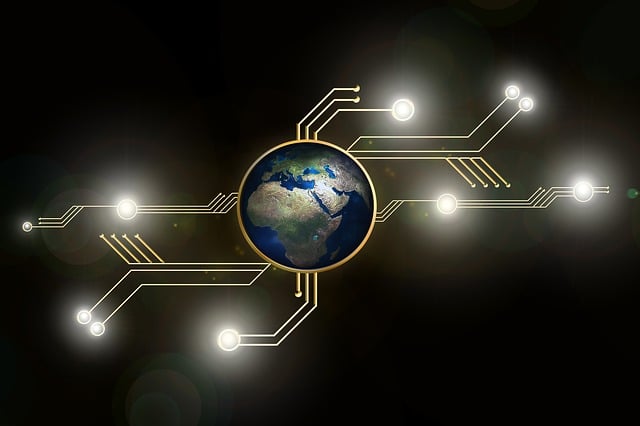The Evolution and Impact of Trade Bots in Modern Trading
In recent years, the financial landscape has been reshaped by technological advancements, one of the most significant being trade bots. These automated trading systems have revolutionized the way traders interact with the markets, allowing for unprecedented speed and efficiency. This article will delve into the intricacies of trade bots, exploring their development, functionality, advantages, challenges, and my own perspectives on their role in today's trading environment.

What is a Trade Bot?
At its core, a trade bot is a software application designed to execute trades on behalf of investors. By leveraging algorithms and predefined strategies, these bots can analyze market data, identify trading opportunities, and execute orders, all without human intervention. This automation not only reduces the workload for traders but also enhances the ability to take advantage of fleeting market opportunities.
The Development of Trade Bots
Historical Perspective
The concept of automated trading dates back several decades. Initially, trading algorithms were employed by institutional investors to manage large portfolios and execute trades with minimal market impact. However, with the proliferation of the internet and advancements in computing power, trade bots became more accessible to retail traders in the early 2000s. Today, a variety of platforms offer user-friendly interfaces for creating and deploying trade bots, making them an essential tool for many investors.
How Trade Bots Work
Trade bots operate using a series of algorithms that analyze market conditions and execute trades based on predefined criteria. These criteria might include technical indicators, price movements, or even news events. The key components that drive the functioning of trade bots include:
- Data Analysis: Trade bots analyze vast amounts of market data in real time, allowing for quicker decision-making than a human trader could achieve.
- Decision Making: Based on the analysis, bots make decisions on when to buy or sell assets, often employing complex algorithms that factor in market conditions.
- Execution: Once a decision is made, trade bots execute trades at lightning speed, often resulting in better prices than those obtained by human traders.
Advantages of Using Trade Bots
Enhanced Efficiency
One of the most compelling advantages of using trade bots is their ability to operate 24/7 without fatigue. Unlike human traders who require breaks, sleep, and can be influenced by emotions, bots maintain a level of consistency that can lead to more strategic trading outcomes. In my opinion, this is one of the core strengths that make automated trading indispensable in today’s fast-paced financial markets.
Backtesting Capabilities
Another significant advantage is the ability to backtest strategies. Traders can simulate how their trading strategies would have performed in the past using historical data. This process not only helps refine strategies but also builds confidence in a bot's potential before risking actual capital. Personally, I believe that backtesting can serve as a valuable guide, helping traders make informed decisions rather than relying solely on gut feelings.
Emotional Detachment
Human emotions can often lead to irrational trading decisions—fear, greed, and overconfidence are all detrimental to trading success. Trade bots mitigate these emotional factors by relying on data-driven strategies alone. In my view, the emotional detachment provided by automation can be a game-changer for many traders, as it fosters a disciplined trading approach that might be difficult to maintain independently.

Challenges and Limitations of Trade Bots
Market Volatility
While trade bots excel in certain scenarios, they are not infallible. Market volatility can lead to unexpected outcomes that a bot might not be programmed to handle. For instance, during significant news events or economic announcements, price movements can be erratic and unpredictable, potentially leading to substantial losses. It’s essential for traders using bots to incorporate safety measures like stop-loss mechanisms to mitigate these risks. In my opinion, while trade bots are powerful tools, they should not be viewed as entirely risk-free solutions.
Technical Issues
Technical failures can also pose a challenge when using trade bots. If a bot encounters a software glitch or connectivity issue, it may fail to execute trades properly, resulting in missed opportunities or unexpected losses. Traders must ensure robust monitoring systems are in place to oversee bot performance and take corrective action when necessary. I think having a contingency plan is crucial when relying on automated systems.
The Future of Trade Bots
Advancements in AI and Machine Learning
The integration of artificial intelligence (AI) and machine learning into trade bots is a significant area of development. These technologies allow bots to learn from past trades and improve their strategies over time, adapting to changing market conditions. In my view, this shift toward more intelligent trading systems will only enhance the landscape of automated trading, providing even greater opportunities for traders.
Ethical Considerations
As trade bots become more prevalent, ethical considerations also come into play. The automation of trading can have implications for market dynamics, including the potential for flash crashes and market manipulation. It is essential for regulators to establish guidelines that ensure fair trading practices and safeguard market integrity. Personally, I believe that striking a balance between innovation and regulation will be critical for the sustainable growth of automated trading systems.
Final Thoughts
In conclusion, trade bots represent a transformative force in the financial markets, offering numerous advantages ranging from efficiency to emotional detachment. However, they are not without their challenges and limitations. The key for traders is to understand both the capabilities and the risks associated with using trade bots, ensuring they have proper safety measures in place. Looking ahead, the continued advancements in technology, paired with thoughtful regulation, will likely shape the future of automated trading in ways we cannot yet fully envision. As someone who is invested in these developments, I remain optimistic about the potential of trade bots to enhance trading efficacy while urging caution around their use.